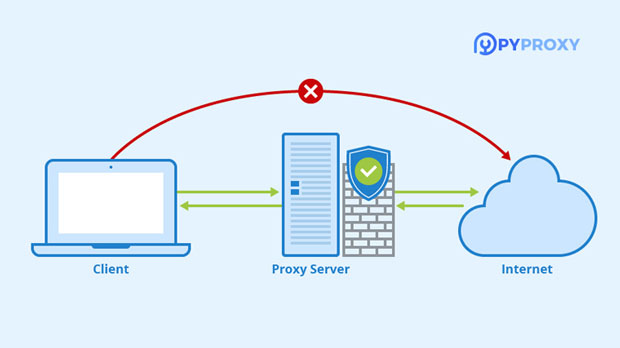When it comes to online privacy and browsing security, proxies are often a popular choice. Two of the most commonly used types of proxies are SOCKS5 and HTTP proxies. While both serve the purpose of hiding a user's IP address and helping maintain anonymity, they differ significantly in terms of their functionality, compatibility, and use cases. Understanding these differences is crucial for choosing the right proxy service for your needs. In this article, we will explore the key differences between SOCKS5 and HTTP proxies and provide guidance on how to select the appropriate one based on your specific requirements. Understanding socks5 proxyA SOCKS5 proxy is a versatile and flexible proxy protocol that operates at a lower level than HTTP proxies. Unlike HTTP proxies that work only with HTTP traffic, socks5 proxies can handle various types of network traffic, including TCP, UDP, and even non-HTTP protocols such as FTP or SMTP. This makes SOCKS5 proxies more suitable for a wider range of applications and use cases.SOCKS5 proxies provide a high level of anonymity because they don’t modify data packets or inspect the content of your internet traffic. They simply relay data between the user and the destination server without altering the information. Additionally, SOCKS5 proxies support authentication, meaning you can add an extra layer of security by requiring a username and password before accessing the proxy.One of the key features of SOCKS5 proxies is their ability to handle both incoming and outgoing traffic, which makes them more suitable for applications like online gaming, file-sharing, and peer-to-peer (P2P) connections. SOCKS5 proxies are also more effective in bypassing geo-restrictions, as they don't rely on protocols tied to specific countries or regions.Understanding HTTP ProxyAn HTTP proxy, on the other hand, is a specialized proxy that only handles HTTP traffic. It works by intercepting and forwarding HTTP requests from a client (such as a web browser) to a destination server. The HTTP proxy essentially acts as an intermediary between the user’s device and the server they are trying to access.While HTTP proxies are commonly used for basic web browsing and accessing websites, they are not as versatile as SOCKS5 proxies. HTTP proxies only work with HTTP requests, which means they cannot handle other types of network traffic like FTP, peer-to-peer protocols, or secure connections. This makes them less suitable for applications that require other protocols or need more robust privacy features.An HTTP proxy works by modifying the header of an HTTP request. However, this modification can make it easier for the destination server to track the user’s activities or identify the use of a proxy, reducing the level of anonymity offered by the proxy. However, some advanced HTTP proxies can implement encryption, which helps improve security and prevent data interception.Key Differences Between SOCKS5 and HTTP Proxy1. Protocol Compatibility: The most significant difference between SOCKS5 and HTTP proxies lies in their protocol compatibility. SOCKS5 proxies can handle a wide variety of traffic, including TCP and UDP traffic, making them more versatile. In contrast, HTTP proxies are designed specifically for handling HTTP traffic, meaning they only work for web browsing and accessing websites.2. Performance and Speed: SOCKS5 proxies are typically faster than HTTP proxies because they don’t modify data packets or inspect the contents of the traffic. Since HTTP proxies examine and sometimes modify HTTP requests, they can introduce additional latency, which may result in slower performance.3. Anonymity and Security: SOCKS5 proxies generally provide a higher level of anonymity and security compared to HTTP proxies. This is because SOCKS5 proxies do not alter the data being transmitted, whereas HTTP proxies modify HTTP request headers, making it easier for websites or third parties to detect the use of a proxy. Additionally, SOCKS5 proxies support authentication, which can add an extra layer of protection. HTTP proxies, on the other hand, are typically easier to bypass or detect due to the way they handle traffic.4. Use Cases: SOCKS5 proxies are ideal for applications that require diverse network traffic, such as gaming, P2P file sharing, or streaming content. They can also handle a wide range of protocols, including FTP, which makes them useful for secure file transfers. In contrast, HTTP proxies are best suited for simple web browsing and are often used to bypass geographic restrictions or to access websites with more specific privacy needs.5. Bypassing Geo-Restrictions: SOCKS5 proxies are generally more effective at bypassing geo-restrictions and content blocking compared to HTTP proxies. Since they support various types of traffic and don't rely on HTTP headers, they are more likely to work across different websites and platforms. HTTP proxies, however, may be limited in their ability to bypass content restrictions and might not be as effective for accessing certain services.When to Use SOCKS5 ProxySOCKS5 proxies are an excellent choice for users who need flexibility, high levels of anonymity, and the ability to handle a wide range of traffic. They are particularly useful for:- Gaming: For users who want to hide their IP address while playing online games or accessing geo-restricted gaming content.- P2P File Sharing: SOCKS5 proxies are ideal for torrenting or file-sharing applications, where both privacy and speed are important.- Streaming: When bypassing geo-restrictions for streaming services like video or music platforms, SOCKS5 proxies are a reliable choice.- Privacy-Conscious Users: If you are focused on maintaining privacy and anonymity while online, SOCKS5 proxies offer strong protection, especially when combined with encryption.When to Use HTTP ProxyHTTP proxies are best suited for users who need basic web browsing functionality and want to bypass regional restrictions on websites. They are typically used for:- Web Browsing: When you only need to hide your IP address while browsing websites.- Bypassing Censorship: HTTP proxies are effective for bypassing content filtering or geographic restrictions on basic websites.- Accessing Restricted Websites: HTTP proxies are commonly used to access websites that are restricted by location or government censorship.However, they are not ideal for use cases involving non-HTTP traffic or for users who prioritize privacy and anonymity.Conclusion: How to Choose Between SOCKS5 and HTTP ProxyWhen choosing between a SOCKS5 and an HTTP proxy, consider your specific needs and use cases. If you require versatility and need to handle various types of internet traffic, SOCKS5 proxies are a better option. They provide superior security, anonymity, and speed, especially for tasks like gaming, torrenting, and streaming. On the other hand, if your primary goal is to browse websites securely and bypass geo-restrictions with minimal configuration, an HTTP proxy may be sufficient.Ultimately, your decision should be based on the level of privacy, security, and functionality you require. Both types of proxies have their advantages, and the right one for you will depend on how you plan to use the proxy and what kind of online activities you engage in.
Jan 15, 2025





























































